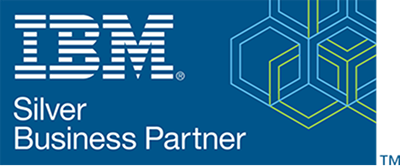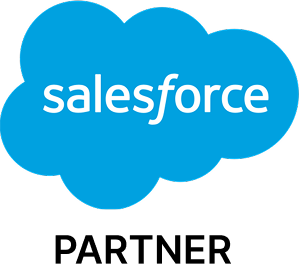Every business is in transition to remain agile and responsive in the digital-first, customer-centric market. However, they often fall behind due to their aging legacy infrastructure and outdated methods. With modern businesses making the smart move to modernize their legacy systems, some are still playing the old game, relying on inefficient operational support.
As legacy systems aren't built for today's heavy workload, they often tend to show bottlenecks and pile up technical debt. If you have come this far, then you might have experienced any of these instances and are looking for a solution. Well, modernization is the only way.
In this blog, we'll show you how modernization benefits enterprises, some best approaches, and the challenges down the road.
Why Your Business Needs Legacy Modernization
Switching to new technologies can be upfront in investment, but it can be beneficial in the long run of the software lifecycle. With legacy systems running operations in the pipeline, their underlying risks can trigger various bottlenecks that affect the business. To give an overlay of how Legacy Modernization is important, here are some pointers for reference:
- System vulnerabilitiesLegacy systems miss out on various product updates and security patches, making them vulnerable to cyber-attacks. With digital malware outrunning security firewalls, legacy applications might lose the edge in security. Thus, by modernizing to the latest solutions, businesses can stay resilient to malware attacks and take proactive measures to solve them.
- Limited Integration Legacy software is designed with older computer languages that rarely cope with the latest code. These result in less integration and businesses spending on multiple tools to run operations. However, with the modernization, internal systems will be designed with a customized API that is compatible with integration with the latest platforms like Cloud and analytics tools. This way, businesses can run tasks easily and improve operational efficiency.
- Lacking Tech Support Skilled professionals are in the move to switch their technical expertise to developing technologies. With this in motion, legacy companies find a hard time get technical support from developers for software maintenance and other purposes. So, switching to the new technology solutions can give a competitive edge in the market and easy maintenance support.
- Legacy Constraints Older architecture tends to slow down operations due to server outages, malware issues, and other instances. With legacy infrastructure being constrained in nature, businesses may miss out on wonderful opportunities for integration and improved efficiency. Whereas a modernization will offer you the whole package. From offering flexibility, new capabilities, serverless storage, cloud support, AI, and more, modernization enables businesses to improve operational efficiency and explore future updates.
- Productivity: Older systems follow a pattern of manual paperwork, slow-running software, and much more. With the infrastructure being so fragile, it doesn't offer collaboration between teams and innovative solutions for operations. With legacy modernization, businesses can enhance collaboration, leverage AI insights for decision making, analyze data easily, and improve team productivity and activity.
Best Ways to Modernize Legacy Application
To make legacy modernization more innovative and perfect, experts follow a focused approach. Let's take a look at them in the following:
Performance Evaluation & Audit
To modernize legacy systems, the first step is to do an overall audit of the internal systems and their performance rating. By doing an audit, experts can identify the architecture, functionality flaws, user roles, data flows, dependencies, and much more. By understanding the software functionalities and their performance, experts can easily design a modernization plan.
Identifying Objectives and Budget Resources
From learning the needs of the software and budget allocation from the client, experts can design a customized modernization for development. By a customized solution, businesses can address their problems, enhance IT operations, decision making, collaboration, customer service, outreach efforts, and much more.
Modernization Approach
Transition towards modern solutions can be made easier or more complex based on the approach they follow. In basic, modernization consists of three ways:
- Re-writing: This is an approach that scratches the entire legacy platform to build a brand new one. Using this approach, businesses can bring in new internal systems, infrastructure, and innovative technologies for functionality. Businesses can go with Rewriting if their existing platform is riddled with an old and inefficient code base.
- Re-Platforming: To make modernization easier with fewer adjustments, Re-platforming is a promising one. By moving the existing systems to an advanced platform, businesses can explore a variety of technological solutions for functionality. Re-platforming is a good choice for businesses that need to optimize the performance of their systems with minimal code changes.
- Refactoring: Businesses that need optimization within their internal systems can achieve multiple benefits from refactoring. By breaking down the infrastructure, refactoring offers intelligent solutions without tampering with the originality of the legacy infrastructure.
AI & ML
Legacy businesses shifting to modernization can be beneficial by leveraging Artificial Intelligence and Machine Learning. With the modern AI & ML solutions, experts can find out the performance gap, flaws, and other performance issues within the internal systems. Additionally, leveraging the AI insights and machine learning analytics, businesses can make data-driven decisions for growth.
Security & Compliance
To safeguard data and applications from malicious malware and attacks, modernization offers you a robust security solution. By implementing advanced security protocols and monitoring, legacy enterprises can upgrade their security layer and bring the utmost protection to the data.
Challenges of Legacy Modernization
As a loyal software in the past, Legacy applications have served many enterprises. However, they were superior before; the evolving market and customer expectations have made them outdated systems that struggle to foster scalability and security in modern business environments.
As modernization delivers efficiency and innovation, organizations often face challenges during the process. Here are some of the challenges enterprises can face:
Complexity & Technical Debt
Legacy applications are built on monolithic architectures. The rigid API of the application can trigger multiple risks when introduced to a new platform and integration. This makes even smaller changes risky, as one adjustment can break down the entire module. Resorting this chain of outdated code and problems often leads to complexity and technical debt for enterprises.
Complexities & Dependencies
Modernization isn't only about upgrading your tech stack. It's about ensuring the infrastructure is compatible with integration for new and existing ones. Legacy applications lack the flexibility of API customization and integration support. Even more challenging, many systems contain manual paperwork and hidden dependencies that surface only on migration. Ignoring this can cause disruptions, delays, and unexpected cost escalations.
Data Migration & Integrity Challenges
Data is the key resource of any enterprise. However, moving it from outdated platforms to modern environments is an uphill process. Legacy databases are built with an ancient code base that has repetitive and poorly structured data. When migration takes place, this code may trigger problems that can lead to irregularity, duplication, or even data loss. Thus, a data recovery and migration from legacy to modern platforms is always a tough task that needs meticulous planning, testing, and a cleansing process.
Performance Gaps & Lack of Talent
One of the less important, yet critical issues when modernizing is the lack of skilled professionals who understand legacy technologies. Many systems still run on programming languages like COBOL or outdated frameworks with very few active developers. As professionals retire, organizations find it increasingly hard to maintain these applications.
Budget Risks
Modernization services are not only a technical project in an enterprise. It's also a major financial investment. From software and infrastructure upgrades, businesses must account for training, process infrastructure redesign, and downtime during transitions. For organizations operating on tight budgets, modernization costs can seem substantial.
How SGS Helps with Legacy Modernization
At SGS, we hold a proven track record of serving both government and private sector agencies. Our experts follow a focused Agile methodology to deliver high-quality software solutions that foster growth for enterprises.
In addition, to strengthen our services, we establish strong partnerships with industry leaders such as Salesforce, ServiceNow, and others, to offer seamless integration and modernization services to our clients.
For consulting and modernization support, connect with us through our social channels or via the Contact Us page on our website.

{
"@context": "https://schema.org",
"@type": "BlogPosting",
"mainEntityOfPage": {
"@type": "WebPage",
"@id": "https://www.sgstechnologies.net/blog/legacy-application-modernization-jacksonville-fl"
},
"headline": "Modernizing Legacy Systems: Best Approaches & Challenges",
"image": "https://www.sgstechnologies.net/sites/default/files/2025-08/Cloud-services_Blog-Post-min_0.jpg",
"author": {
"@type": "Organization",
"name": "SGS Technologie",
"url": "https://www.sgstechnologies.net"
},
"publisher": {
"@type": "Organization",
"name": "SGS Technologie",
"logo": {
"@type": "ImageObject",
"url": "https://www.sgstechnologies.net/themes/custom/silver/assets/images/sgs-text-logo.svg"
}
},
"datePublished": "2025-08-25",
"dateModified": "2025-08-25"
}
</script>










